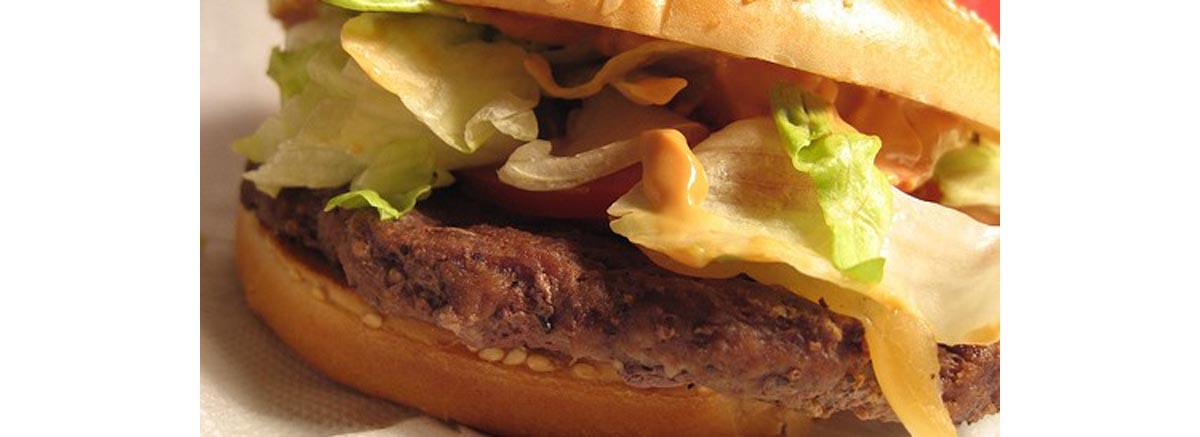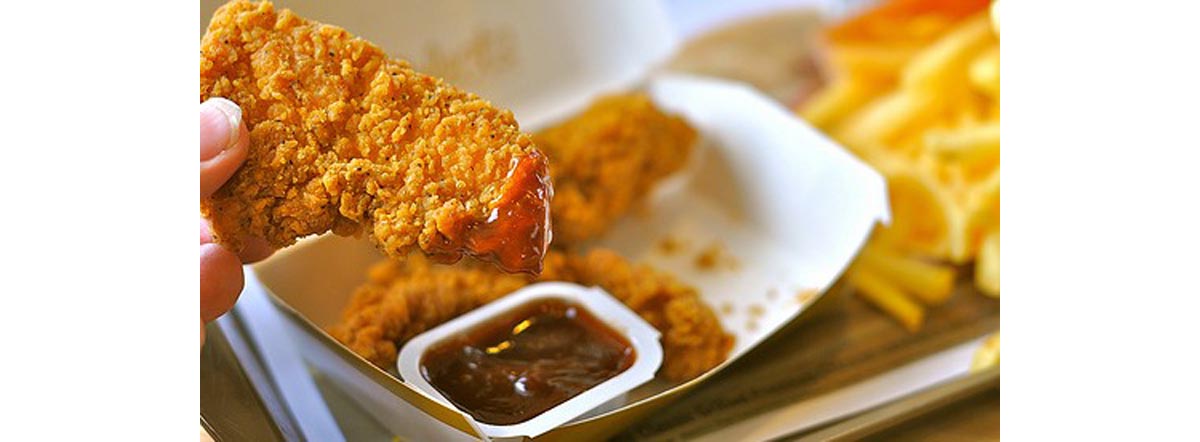Think of healthy food and your mind is drawn to salads full of colorful vegetables, some exotic fruits, fresh meat and fish, healthy fats such as nuts and olive oil, and depending on your stance regarding healthy eating, perhaps whole-grains and dairy products too.

Above all, you probably think of relatively unprocessed foods – low in starchy carbs and sugars, with virtually no additives and plenty of vitamins, minerals and lean protein.
You don’t think of McDonalds.
But could that be a mistake? The importance of balancing health and dieting with a flexible lifestyle and enjoyment is often stressed, and we’re always told “everything in moderation” but could it really be that this moderation approach can really stretch to fast food establishments like McDonalds?
In recent years, McDonalds themselves have appeared to be taking a stand. 10 or 15 years ago, what went into McDonalds products was a well guarded secret, and good luck trying to find out how many calories were in your Big Mac meal.
Now though, due to more pressure from the government, better consumer awareness and the media, such as the documentary “Supersize Me” McDonalds are under a lot more pressure to play ball, and seem to be giving consumers more knowledge and aiming for a healthier message.
Let’s face it, no one, not even the most ardent of McDonalds lovers, or perhaps even McDonalds’ own CEO is going to argue that your bacon double cheese with an extra large strawberry milkshake isn’t going to have any negative impact on your health and waistline, or that you’re better off eating one of those than a baked chicken breast with mixed vegetables, but McDonalds are making an effort.
In 2010, McDonalds announced they were attempting to make their products fit more in line with the United States Department of Agriculture’s dietary guidelines for Americans.
All branches also claim to carry nutrition information leaflets, detailing the calories, fat and sugar in every single item on the menu.
On top of that, McDonalds released a special menu, entitled “Favorites Under 400.”
As the catchy name suggests, this menu includes a host of popular meal choices, all under 400 calories, such as regular hamburgers and cheeseburgers, wraps, grilled chicken burgers, 6 piece chicken nugget boxes, salads, oatmeal, apple slices, smaller sizes of French fries and a number of different drinks.
So it seems like McDonalds are doing everything right. Or are they?
The Truth About McDonalds Calories
In theory, anything on the menu at McDonalds could fit into your weight loss plan. Even the most calorie-dense burger – the angus bacon and cheese, which comes in at 790 calories could be included in your diet on a daily basis, provided you didn't exceed your total calorie allowance and were still eating in a calorie deficit.

This clearly isn’t healthy, and by eating so many of your calories from processed meat, cheese and a refined carb-filled bun, you’ll likely be missing out on a host of other vitamins and minerals. Plus, you’ll probably be restricted to nothing but grilled chicken breast and lettuce leaves for the rest of the day, but if weight loss was your sole goal, it’s doable.
Say hello to 2,190 calories – consumed in 20 minutes.
That’s more calories than most women need in a whole day.
Worst Options
What are the worst options calorie-wise on the McDonalds menu? Most of these won’t surprise you, but some may come as a bit of a shock:
Breakfast
A big breakfast with hotcakes tops the bill here, at a whopping 1090 calories. There’s 56 grams of fat, 111 grams of carbs and 90 percent of your daily salt intake. Doesn’t look like breakfast is the most important meal of the day any more.
Switch to a McMuffin or a bagel and you’re looking at between 370 and 570 calories. Certainly not quite as many, but that’s before you add your OJ, milk and sugar in your coffee, or your side of fruit – whatever else you decide to eat first thing.
Burgers
Various angus burgers are the worst offenders, but the crispy chicken club, double quarter pounder with cheese, Big Mac and McRib all top over 500 calories. Basic hamburgers, cheeseburgers and grilled chicken wraps are all 250 to 400 calories.
Chicken and Fish
Think chicken and fish are the healthy options?
Wrong.
Okay, they’re slightly better, but the numbers still aren’t pretty. Any premium or crispy chicken burger or wrap has been fried and coated in breadcrumbs, taking its fat and carb content through the roof. Even the crispy chicken salads are around 400 calories, while the supposedly health-conscious vegetarian choice of the fillet o fish is around 400.
Desserts and Drinks
This is probably a no-brainer, but apart from fruit bags (which are still mainly sugar, just with some vitamins, minerals and added fiber) there are no good desserts. Shakes and sodas are an incredibly easy way to overdo the calories, while everyone knows sugary, fatty desserts are pretty much public enemy number one for dieters.
Oh – bottled water, diet drinks and plain coffee are all as close to zero calories as you can get, so knock yourself out with those.
How to Eat Healthy at McDonalds
While you should make fast food chain visits as rare as possible, sometimes you might just have to pay a visit to the golden arches. This is not an excuse to throw your diet out the window and go on a fast food binge though. Here are several handy tips to ensure you stay on track at McDonalds –
- Opt for a calorie-free drink.
- Order a small side or garden salad to help fill you up.
- Weigh up what you want to eat. If you want a burger, have one, just majorly reduce your carb and fat intake for the rest of the day, and make it a very rare occurrence.
- Go for the lowest carb option (ie. one that doesn’t have a huge bun or lots of bread with it.)
- The better option, however, is a grilled chicken salad, dressing on the side.
- Never supersize!
- “McDonalds. Nutrition. Changing. Together”, Accessed on March 11th, 2013, Retrieved from http://www.mcdonalds.com/us/en/food/food_quality/nutrition_choices.html
- Photo courtesy of 32307961@N06 on Flickr: www.flickr.com/photos/32307961@N06/5405513366
- Photo courtesy of 40726522@N02 on Flickr: www.flickr.com/photos/40726522@N02/6066251337

